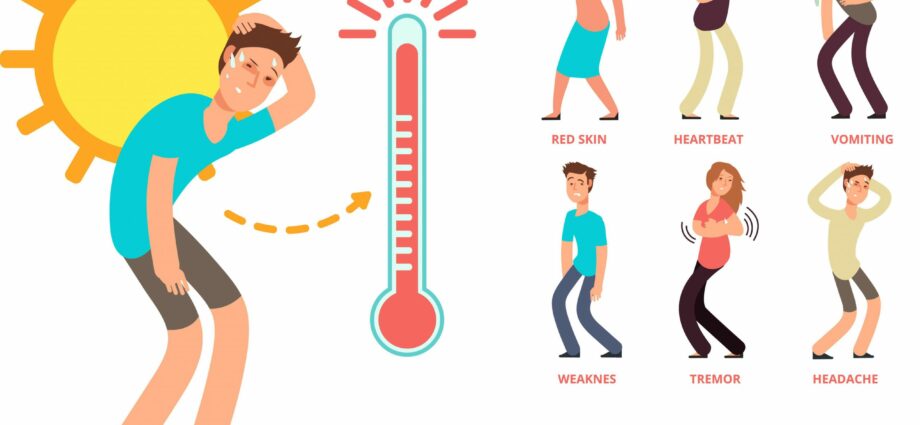Sunstroke (Heat stroke)
Heat stroke1 is caused by too long or too much exposure to strong heat. Sunstroke is heat stroke caused by too long exposure to the sun.
In the event of heat stroke, which particularly affects children and the elderly, the body temperature rises above 40 ° C. We then speak of hyperthermia. The body is no longer able to properly regulate its internal temperature and maintain it at 37 ° C as it normally does. Cramping, flushing of the face or a strong urge to drink may appear. The body no longer sweats, headaches appear, the skin becomes hot and dry. The affected person may then suffer from nausea, vomiting, muscle pain, dizziness or even fainting. Beyond 40,5 °, the risk is fatal.
Heat stroke can occur in an overheated place, such as in a car left in direct sunlight, under the roof in summer or during intense physical activity.
Heat stroke shouldn’t be taken lightly as it can be serious. Left untreated, it can cause neurological disorders, kidney or heart damage, comas and even death.
Everything must be done to bring down the body temperature as quickly as possible. The person suffering from sunstroke should immediately be put in the shade, cooled and rehydrated. Heat stroke should be considered an emergency. In infants, for example, in the event of crying or dryness of the tongue and skin, it is imperative to call 15 as soon as possible. Too dry skin is easily detected. By pinching it lightly, we notice that it lacks elasticity and stays pleated longer.
Types
Heat stroke can occur following prolonged exposure to the sun (sunstroke) or high heat. It can also follow intense physical activity. This is sometimes referred to as exercise heat stroke. The latter may be due to hyperthermia associated with dehydration. Thus, the athlete does not sufficiently compensate for water losses due to perspiration during physical exertion. In addition, during this effort, the body produces a lot of heat because of the muscular work.
Causes
The main causes of sunstroke are prolonged exposure to the sun, especially in the head and neck. Heat stroke is linked to extreme heat. Finally, alcohol is a risk factor because it can prevent the body from properly regulating temperature.
Diagnostic
Doctors easily recognize heatstroke by clinical signs. They may sometimes request additional examinations. Thus, a blood test and a urinalysis, the latter to check the proper functioning of the kidney, may be prescribed. Finally, x-rays can be useful to find out if certain organs have been damaged.










